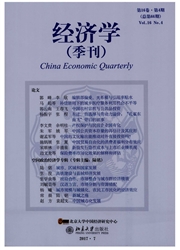

 中文摘要:
中文摘要:
在Stackelberg竞争框架下,本文沿用Spencer and Brander(1983)第三国市场模型,考虑存在中间品贸易情形时,一国的战略性研发政策。研究结果表明,在只有单个国家可以实施研发政策的情况下,若最终产品间的差异程度较大(小),那么该国的最优研发政策为征税(补贴);而当两国政府均可以干预各自国内企业研发时,一国最优的研发政策将随最终产品间的差异程度不同而选择征税、补贴或不干预,并且当最终产品间的差异程度位于一定范围之内时,一国的研发补贴政策并不会招致另一国的报复,因此,战略性研发补贴政策并不如LeahyandNeary(2001)分析的稳健。
 英文摘要:
英文摘要:
This paper analyzes governments' optimal R&D policies in the context of intermediate product trade. The model follows Spencer and Brander(1983)'s third market model under stackelberg competition. It is shown that the optimal policies are taxing (or subsidi- zing) R&D if the degree of product differentiation is higher (or lower), when only one coun- try conducts domestic R&D intervention. When both countries conduct R&D intervention, a government may choose to subsidize, tax, or do nothing, depending on the degree of product differentiation. Moreover, a government may not retaliate for the other government's subsidy when the product differentiation falls in certain ranges. Therefore we find that the strategic R&D subsidy policy may not be as robust as suggested by Leahy and Neary (2001).
 同期刊论文项目
同期刊论文项目
 同项目期刊论文
同项目期刊论文
 How is U.S. trade policy towards China determined? A political economic analysis illustrated by voti
How is U.S. trade policy towards China determined? A political economic analysis illustrated by voti 期刊信息
期刊信息
